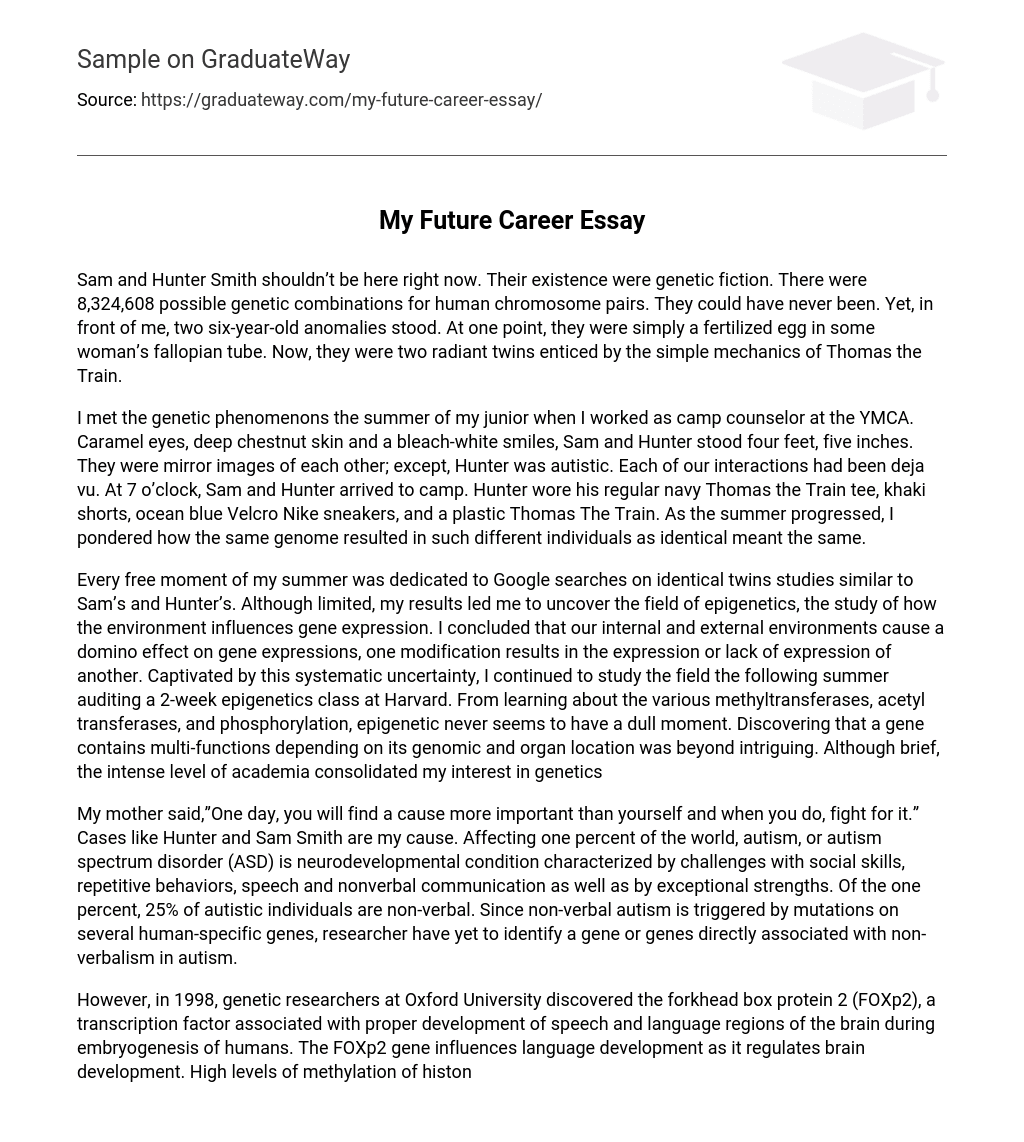Sam and Hunter Smith shouldn’t be here right now. Their existence were genetic fiction. There were 8,324,608 possible genetic combinations for human chromosome pairs. They could have never been. Yet, in front of me, two six-year-old anomalies stood. At one point, they were simply a fertilized egg in some woman’s fallopian tube. Now, they were two radiant twins enticed by the simple mechanics of Thomas the Train.
I met the genetic phenomenons the summer of my junior when I worked as camp counselor at the YMCA. Caramel eyes, deep chestnut skin and a bleach-white smiles, Sam and Hunter stood four feet, five inches. They were mirror images of each other; except, Hunter was autistic. Each of our interactions had been deja vu. At 7 o’clock, Sam and Hunter arrived to camp. Hunter wore his regular navy Thomas the Train tee, khaki shorts, ocean blue Velcro Nike sneakers, and a plastic Thomas The Train. As the summer progressed, I pondered how the same genome resulted in such different individuals as identical meant the same.
Every free moment of my summer was dedicated to Google searches on identical twins studies similar to Sam’s and Hunter’s. Although limited, my results led me to uncover the field of epigenetics, the study of how the environment influences gene expression. I concluded that our internal and external environments cause a domino effect on gene expressions, one modification results in the expression or lack of expression of another. Captivated by this systematic uncertainty, I continued to study the field the following summer auditing a 2-week epigenetics class at Harvard. From learning about the various methyltransferases, acetyl transferases, and phosphorylation, epigenetic never seems to have a dull moment. Discovering that a gene contains multi-functions depending on its genomic and organ location was beyond intriguing. Although brief, the intense level of academia consolidated my interest in genetics
My mother said,”One day, you will find a cause more important than yourself and when you do, fight for it.” Cases like Hunter and Sam Smith are my cause. Affecting one percent of the world, autism, or autism spectrum disorder (ASD) is neurodevelopmental condition characterized by challenges with social skills, repetitive behaviors, speech and nonverbal communication as well as by exceptional strengths. Of the one percent, 25% of autistic individuals are non-verbal. Since non-verbal autism is triggered by mutations on several human-specific genes, researcher have yet to identify a gene or genes directly associated with non-verbalism in autism.
However, in 1998, genetic researchers at Oxford University discovered the forkhead box protein 2 (FOXp2), a transcription factor associated with proper development of speech and language regions of the brain during embryogenesis of humans. The FOXp2 gene influences language development as it regulates brain development. High levels of methylation of histone 3 lysine 4 (H3K4) on the promoter region of the FOXp2 gene have been linked to delayed or absent cognitive abilities, such as oral communication as well as written communication. Between 2000 to 2002, the prevalence of autism increased from 3.06 % to an all-time high of 14.7% among individual born within the time span with 25% being non-verbal. In addition to, many children diagnosed with autism had been weaned off baby formula containing DHA/ARA supplements, which promotes brain development, rather than breast milk. With Harvard’s interdisciplinary curriculum and genomic research labs, I hope to one day pursue research on the the effects of baby formula has on methylation patterns of H3K4 of the promoter region of the FOXp2 gene with nonverbal children in hopes to solve enigmas like Sam and Hunter Smith Unearthing the mysteries of the human genome, this is not the only way I plan to utilize the multifaceted education gifted by Harvard but rather the beginning of a cause much greater than myself.





